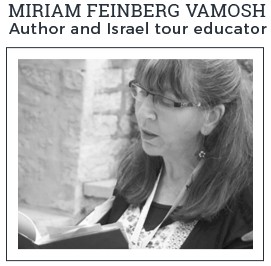Archaeology Reveals Ancient Women’s Hopes and Dreams
Archaeology Reveals Ancient Women’s Hopes and Dreams
One of the traditions of the Jewish New Year is to celebrate it with something new. That makes this the perfect opportunity to tell you about some exciting recent archaeological discoveries. One of them involves a group of recently published finds from Tel Kadesh in the Galilee, which may representing a very particular milestone in one ancient young woman’s life. It really touched me and I hope it will resonate with you too. The other, discovered only this year, reminds us of the Christians who spent their lives in the Negev Desert centuries ago, and is rare testimony to the presence of women in those days.
Cited but not celebrated
First, let’s look at the way finds associated with women were once pigeonholed. Such finds were reported, albeit sparingly, in the old days. One example is possibly the earliest evidence of ancient women at an archaeological site in Israel – bone needles discovered many decades ago in a cave in early excavations at Megiddo – a site better known for warfare than weaving. The excavator at the time, Gordon Loud, dated these objects to “pre-pottery inhabitants” who lived in the cave – going back more than 5000 years. Today’s experts might be more inclined also to point out that such items are more often than not associated with women, in ancient cultures as well as traditional contemporary ones. Thus they enrich our knowledge of the way women lived and worked in humanity’s early days.
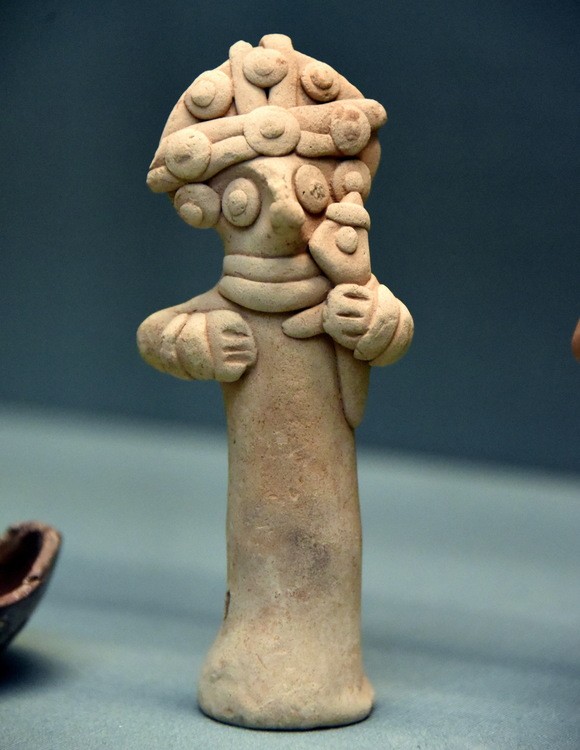
Perhaps the most familiar objects representing women in the archaeological record are the so-called pillar figurines from eighth- and seventh-century BCE Judah. Recent debate about these objects signals the greater focus these days on ancient women and their lives. Common wisdom has long held that these statuettes were used in fertility rites, possibly in the home, and that they had special significance following the devastating attack on Israel by the Assyrian King Sennacherib. But did they? You’ll find a fascinating new theory about these figurines in an opinion piece by Stephanie Lynn Budin published in July in the newspaper I work for, Haaretz.
A young girl’s hopes?
A scholarly and evocative article by Prof. Adi Erlich of the University of Haifa has recently reported a find discovered in the 2008 excavation season at Tel Kadesh in the Upper Galilee. Underneath a floor dated no later than around 175 BCE, when Kadesh was a pagan site, a cluster of objects was found. It contained various rare finds including writing tools, a pin used to fasten hair or a women’s garment, with a finial carved as a female figure and a terracotta figurine portraying a chubby, winged Eros, the god of love. It also featured glass gaming pieces, some of them in the form of astragals (animal knuckle bones used something like dice in the Roman-Byzantine world). The writing kit contained a bronze stylus used for inscribing letters on a waxed wooden tablet (the ancient way of practicing penmanship), and an inkwell.
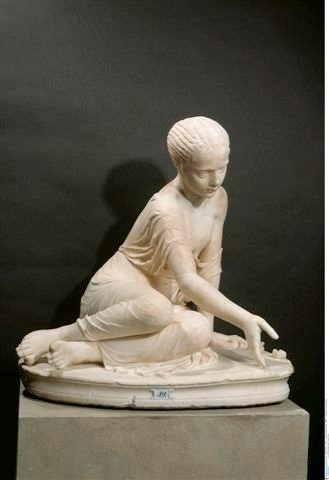
Rome, Pergamon Museum, Berlin. From Teach it to your Children:
How Kids Lived in Bible Days. Courtesy of AviMedia.
Prof. Erlich suggests that the owner of these objects was a young woman about to be married, and that she had buried the objects as a symbol of her willingness (or necessity) of leaving her childhood behind, to guarantee the success of this new stage in her life. The hair or dress pin in the hoard fits perfectly here – it could have held a lock of the girl’s hair or a veil dedicated and deposited in the hoard, while the glass astragals and other glass objects could have once been her toys.
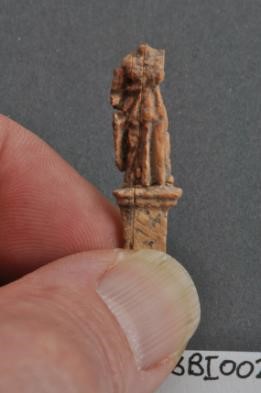
Courtesy of Prof. Adi Erlich
Among other things, Erlich cites a moving ancient reference in support of her theory, attributed to the Greek poet Antipater: “Hippe, the maiden, has put up her abundant curly hair, brushing it from her perfumed temples, for the solemn time when she must wed has come…[she] who has bidden farewell to her knuckle-bones, both a husband and children” (Greek Anthology, VI, 276).
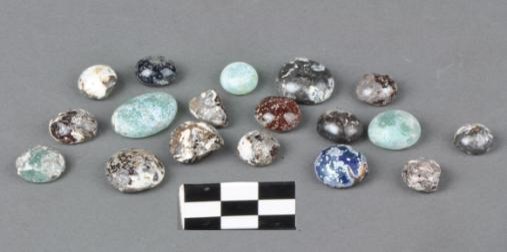
Tel Kadesh, Galilee, Israel. Courtesy of Prof. Adi Erlich
“Blessed Maria” of the Negev – now we know your name
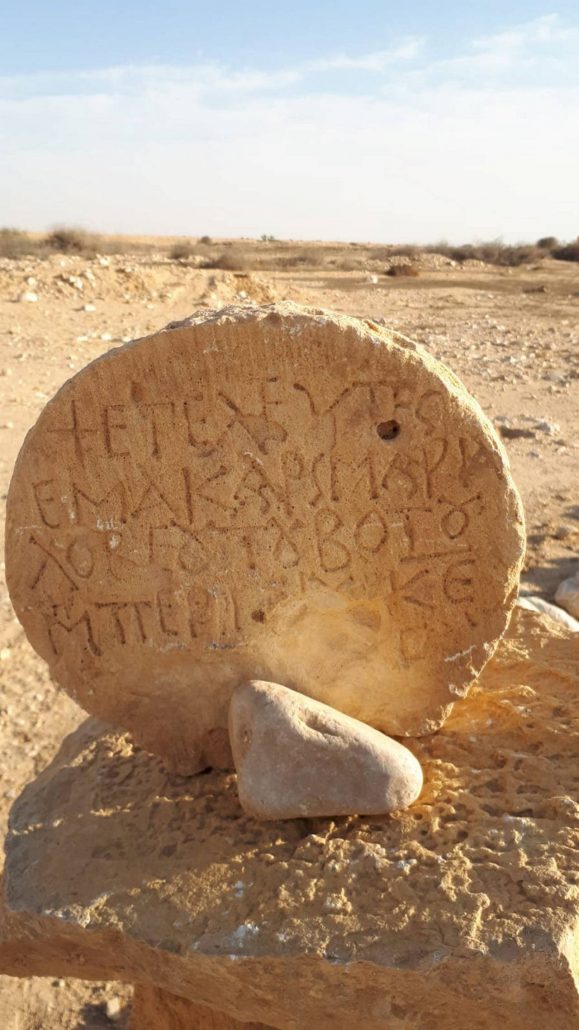
courtesy of the photographer.
In the midst of the pandemic, Time Magazine published its list of the world’s “greatest places to visit in 2021” and Israel’s Negev Desert was on it. I wish all Israel visitors would begin their travels in the Negev, home of the most formative spiritual experiences described in the Bible. Today’s Christians can visit the ruins of the towns where their spiritual ancestors lived centuries ago, at what are now Israel Nature and Parks Authority sites – among them Avdat, Shivta and Nitsana. Just this year, at Nitsana a tombstone was found of a woman, recording the date of her death – February 9, and the words “Blessed Maria, who lived an immaculate life.” The stone, which is about 1,400 years old, was found by national park rangers during a cleanup operation that provided employment for hundreds of people who had lost their jobs due to the pandemic. David Palmach, the principal of of the Nitsana Education Center near the ancient site, identified the tombstone. It dates from a time when Nitsana served as a center for surrounding villages, with churches, a monastery and an inn serving Christian pilgrims traveling to Mount Sinai.
And on that note, join me in looking forward to more exciting new discoveries in the archaeological world (and in our lives as well!), and wishing a healthy and fulfilling year ahead to all.

Want to know more?
Ben Zikri, Almog. 2021. “Archaeologists Find Byzantine Tombstone Inscribed ‘Blessed Maria’ in Israel,” Haaretz, Jan. 9, 2021, by Almog Ben Zikri. https://www.haaretz.com/israel-news/archaeologists-find-byzantine-tombstone-inscribed-blessed-maria-in-israel-1.9428845.
Budin, Stephanie. 2021. “Archaeology has a Problem with Females and Figurines in Israel and the Levant.” Haaretz, July 19, 2021. https://www.haaretz.com/archaeology/archaeology-has-a-problem-with-females-and-figurines-1.10012823
Byrne, Ryan. 2004. “Lie Back and Think of Judah. The Reproductive Politics of Pillar Figurines.” Near Eastern Archaeology 67(3): 137–151. https://www.journals.uchicago.edu/doi/abs/10.2307/4132376.
Erlich, Adi. 2017. “Happily Ever After? A Hellenistic Hoard from Tel Kadesh in Israel.” American Journal of Archaeology 121: 39–59.
Loud, Gordon. 1948. Megiddo 2: Seasons of 1935–39. Pl. 165:1. Chicago: Oriental Institute Publications.

